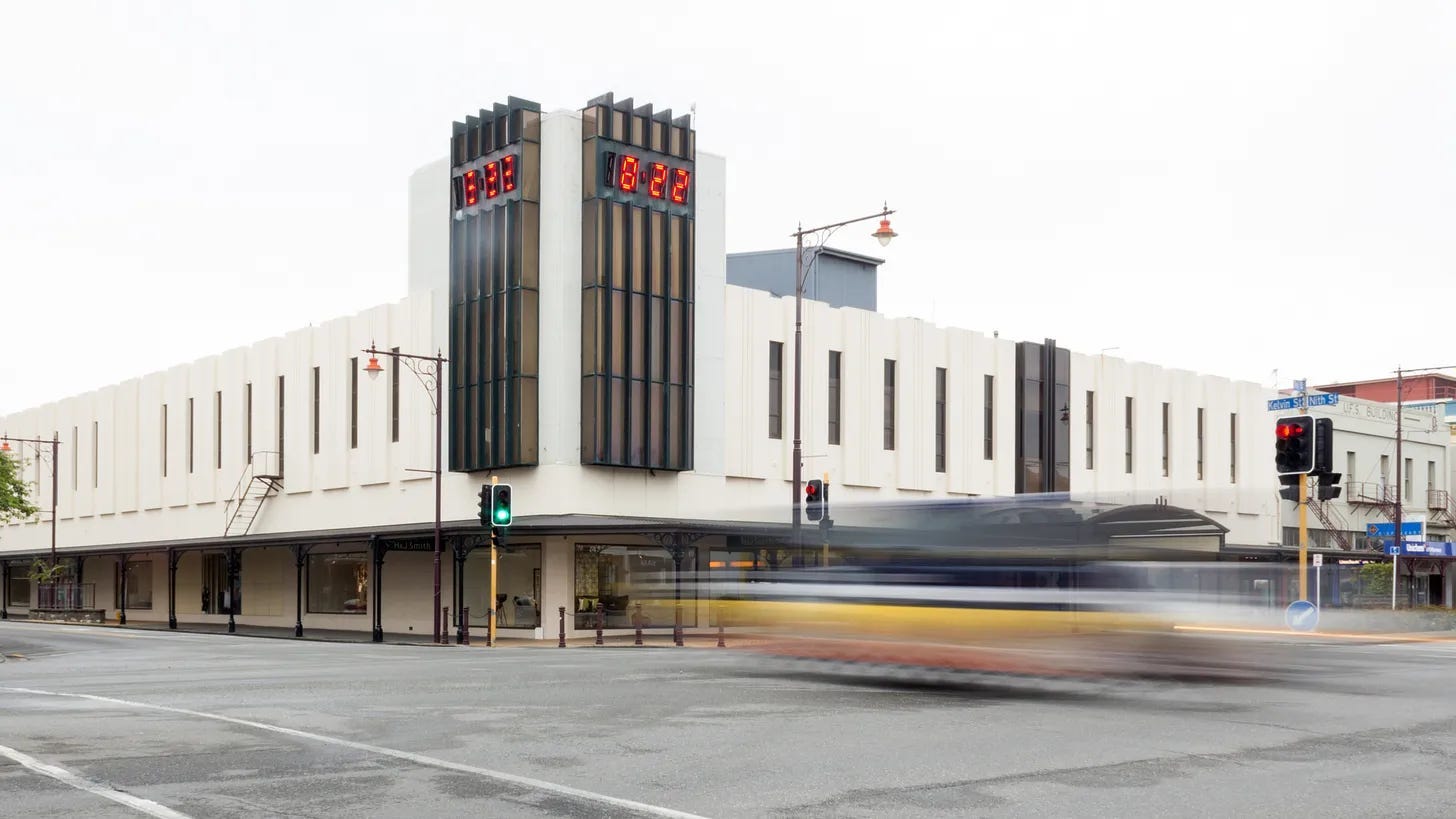Council urged to buy largely vacant H&J Smith site
“The only long-term player, which is the point I’ve made, in this game is the council."

A former Inner-City Steering Committee member has made yet another plea to the Invercargill City Council to purchase the now largely vacant H&J Smith site and redevelop it.
Invercargill architect Bob Simpson was part of a group of locals who formed Vibrant Invercargill in the mid-1990s.
Simpson fronted the council at a hearing in December where he outlined his belief that the council needed to “take a pause and have a cup of tea” regarding the development of the new museum.
He said the landscape had now changed, given the H&J Smith department store had closed, and that site should now be considered for the museum build.
However, councillors at the time noted that it had already decided to build a new museum at the current Queens Park site and they believed the public simply wanted the council to get on with it.
Simpson returned to the council on Tuesday when he again urged councillors to snap up the H&J Smith site, and potentially some additional sites as well.
He wanted to see a civic square, new museum, art gallery, civic building, and commercial space incorporated into a redeveloped H&J Smith site.
He believed the council was best suited to amalgamate inner city land for potential community or commercial use.
Although Cr Grant Dermody - who is the council’s finance and projects committee chair - wasn’t convinced the council should get too involved in commercial property development.
“We’ve done a wonderful public-private partnership with the Richardson family, with the CBD, and that has been magnificent, along with the support of the likes of the Community Trust and equally central Government.
“But I don’t think council should get too far down the chain of becoming a commercial speculator. I think our job is to generate that positivity in the city and then with that will flow on to private people investing in commercial property.
“I think that’s the way it works best in all cities across New Zealand.”
In response, Simpson said private developers want action and he believed that was why they previously had headed to the fringes of the Invercargill city to find large enough blocks of land to develop.
“They have a short time frame; they don’t have time to amalgamate sites. And that is why we had the development of the building that has been vacated by Farmers recently, when that was essentially outside the city fringes at the time.
“Then there was the development of all sorts of things in the showgrounds because commercial people could not get reasonable-sized sites in town.
“The only long-term player, which is the point I’ve made, in this game is the council.
“I think the council should amalgamate land. I don’t think they should be competing with ratepayers, I agree with that. I think they probably overdid that competing with ratepayers in the [CBD] block, but it’s happened.”
Acting Mayor Tom Campbell asked Simpson if he had any idea what the cost would be to the idea of moving the museum to the inner-city and developing the H&J Smith site, with a town square and art gallery included.
Simpson said he did not.
Although earlier Simpson had pointed out there was still $17m in the council’s long-term plan for an art centre. He believed the museum and art gallery should be combined and that $17m could be put towards the project.
Simpson said over many years he had advised clients and others not to adopt ambitious timetables and tight budgets, because they usually led to disappointments and poor buildings.
He was concerned that could be the case with the current museum project.
Dermody - who is the council lead on the museum project - acknowledged the point Simpson made about what impact time pressures could have.
However, Dermody pointed out the storage facility component of the project was completed ahead of time and under budget.
Dermody remained confident the project team was keeping pace with what was required but was aware of the need to step slowly through it and not rush things.





